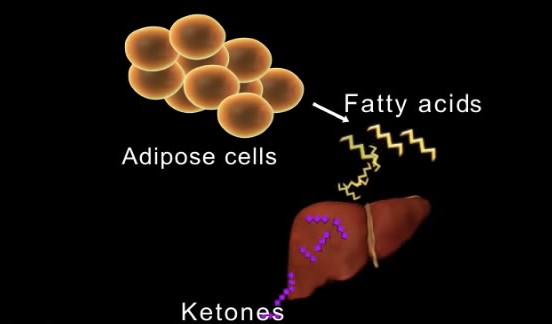Diabetic ketoacidosis is a life-threatening complication experienced by diabetic patients and is characterized by elevated levels of ketone production in the body. Ketones are commonly known as blood acids.
As diabetic ketoacidosis is deadly, patients should be aware of all the warning symptoms of the condition. This will enable them to seek emergency care at the earliest.
Symptoms
The symptoms associated with diabetic ketoacidosis typically have a rapid onset, often within 24 hours. Some of the common signs and symptoms that may accompany diabetic ketoacidosis are listed below:
- Nausea and vomiting
- Excessive thirst
- Increased and frequent urination
- Exhaustion, fatigue, and/or weakness
- Abdominal pain
- Loss of appetite
- Confusion or disorientation
- Shortness of breath
- The breath may smell fruity
- High levels of blood sugar and ketones in urine. These symptoms can be verified by urine and blood home test kits, available for purchase at drugstores.
The symptoms associated with diabetic ketoacidosis tend to mimic the symptoms of common conditions like the flu. This poses a problem in ascertaining whether the symptoms are caused due to deadly diabetic ketoacidosis or an infection. Hence, diabetic patients need to regularly check their blood sugar levels, especially if they feel sick or unwell. Patients may also check the levels of ketones in urine on a regular basis.
Pathophysiology of diabetic ketoacidosis
Diabetic patients may suffer from diabetic ketoacidosis when the insulin levels in their body drops significantly. Insulin is responsible for facilitating the easy passage of sugar or glucose into the cells of the body.
Glucose is the main source of energy for the muscles and other bodily tissues. When insulin occurs in low levels, then the body breaks down fat to produce energy. This results in the formation of ketones, i.e., toxic blood acids. They are passed into the bloodstream and if left untreated can eventually cause diabetic ketoacidosis.
Complications
Diabetic ketoacidosis is treated via administration of electrolytes like sodium, potassium, and chloride as well as other fluids. Most health complications associated with diabetic ketoacidosis arise due to these kinds of treatment.
- Low blood sugar or hypoglycemia: Insulin aids the process of passage of glucose into the body cells. This causes the levels of blood sugar to drop. A rapid decrease in the blood sugar levels can then result in hypoglycemia.
- Low levels of potassium or hypokalemia: Administration of fluids and insulin can cause the levels of potassium in the body to decrease substantially. This can then cause impairment of heart, muscle, and nerve functioning.
- Brain inflammation or cerebral edema: Rapid correction of the levels of blood sugar in the body can result in brain inflammation and swelling. This health complication typically affects children, especially those children who have recently been diagnosed as being diabetic.
Causes

Diabetic ketoacidosis is caused when elevated levels of ketones in the body is left untreated.
The cells of the muscles and other tissues in the body mainly use sugar as the primary source of energy. Insulin performs the function of passing glucose into these cells. Low levels of insulin prevents the body from using it to produce energy. In such cases, the body releases certain hormones which then allow it to breakdown fat and use it as an alternate source of energy. This abnormal process is characterized by the production of toxic acids called ketones. They are then passed into the bloodstream; excess quantities of ketones are removed from the body along with urine.
Diabetic ketoacidosis may be triggered due to:
- Problems in insulin therapy, including missed insulin treatments and insulin treatment deficits. This can cause low insulin levels in blood, excessive ketones production, and finally diabetic ketoacidosis.
- The underlying presence of infections or illnesses, especially pneumonia or UTIs, can induce the body to commence the production of certain hormones like adrenalin. These hormones counter the function and effect of insulin, which in turn can trigger an episode of diabetic ketoacidosis.
- Other risk factors which can increase the vulnerability to developing diabetic ketoacidosis include high fever, stress, physical or emotional trauma, stroke, surgery, alcohol or drug abuse, and heart attack.
Treatment of diabetic ketoacidosis
Untreated cases of diabetic ketoacidosis can lead to unconsciousness and even death of the patient. Hospitalization and emergency medical care is therefore vital to treating the condition.
Diabetic ketoacidosis is treated in the below listed 3 main stages:
- Fluids are administered orally or intravenously till the body becomes sufficiently hydrated. This will also help dilute the increased levels of blood sugar.
- Nil or low levels of insulin can result in decreased levels of electrolytes in the body. Electrolytes are therefore given intravenously to facilitate normal function of muscle, nerve, and heart cells.
- Doctors will also administer intravenous insulin so as to counter the effects of diabetic ketoacidosis. The therapy will continue till the content of ketones in blood becomes normal and the levels of blood sugar drop below 240 mg/dL.
After diabetic ketoacidosis is brought under control, doctors will carry out various tests to find out the cause of diabetic ketoacidosis. Then, the underlying cause is treated as per standard medical procedures.

